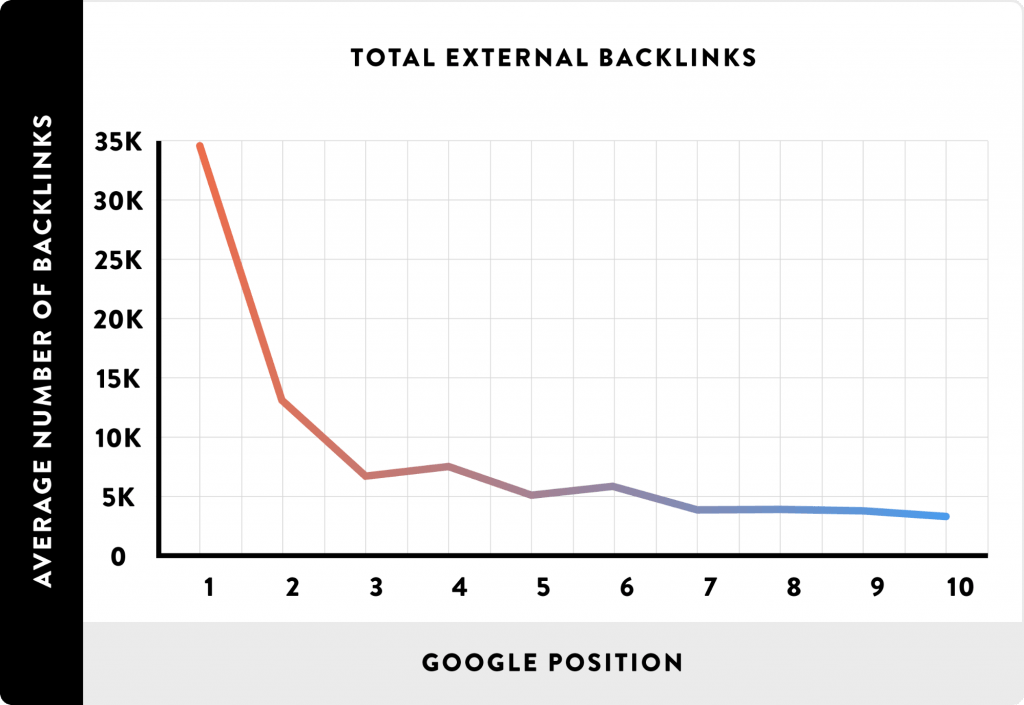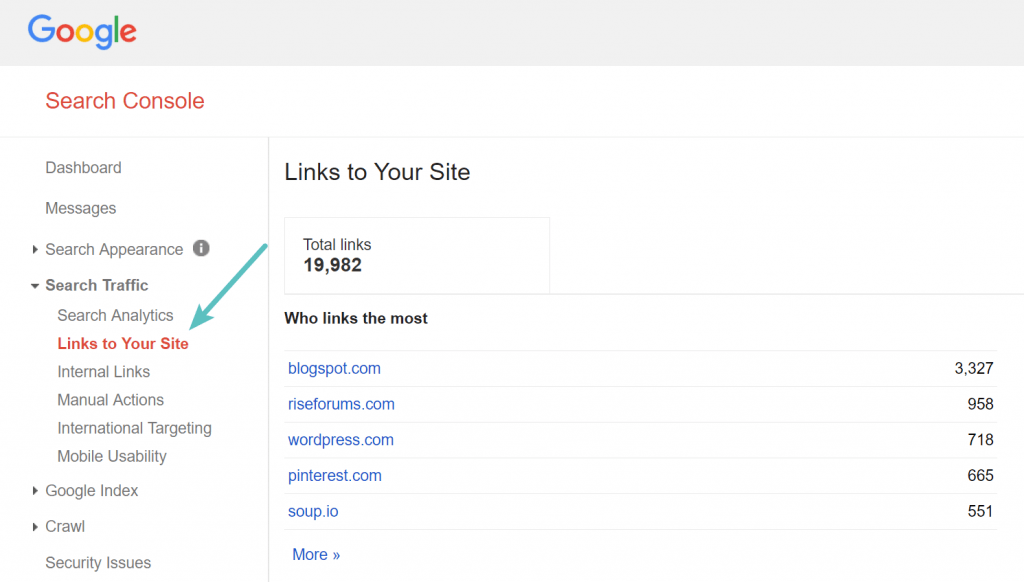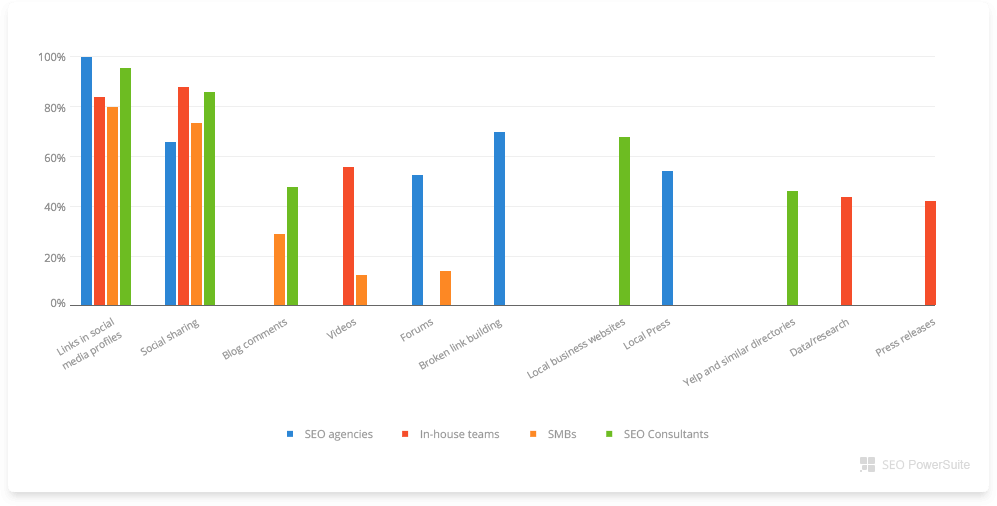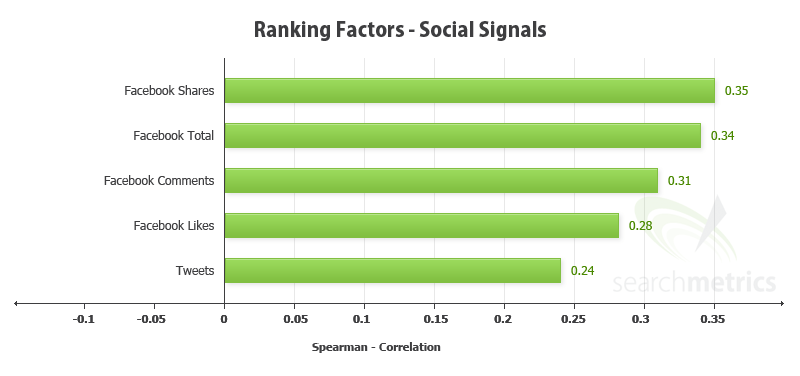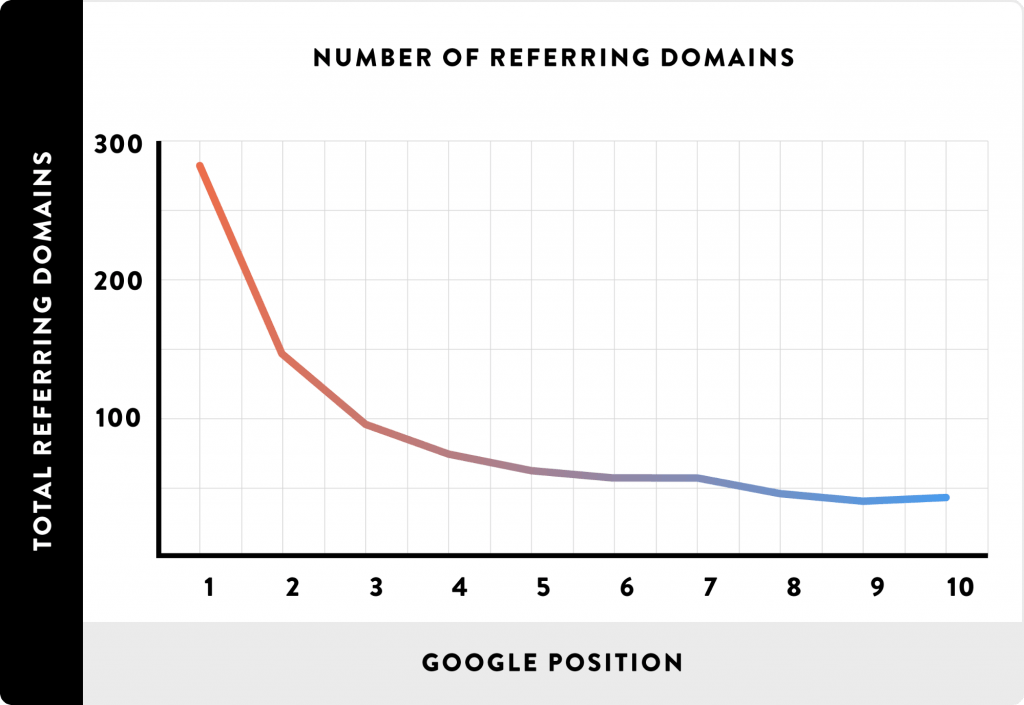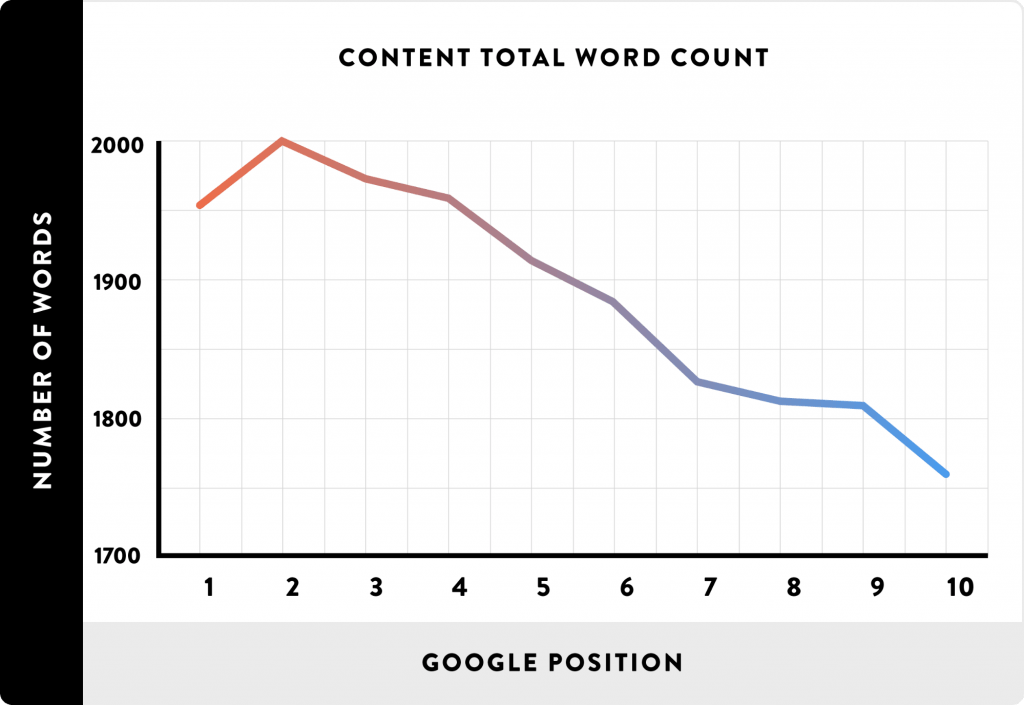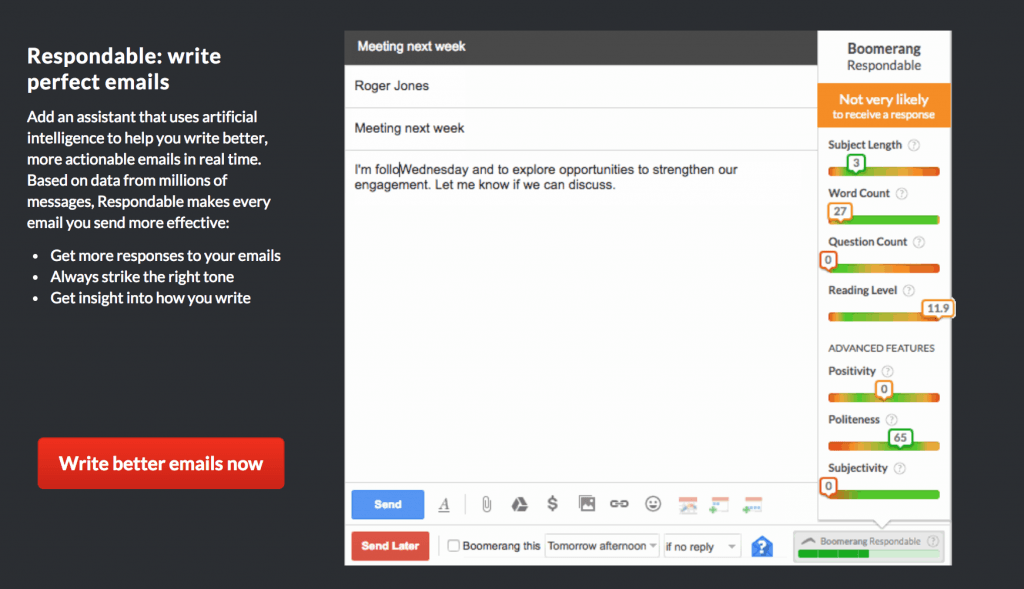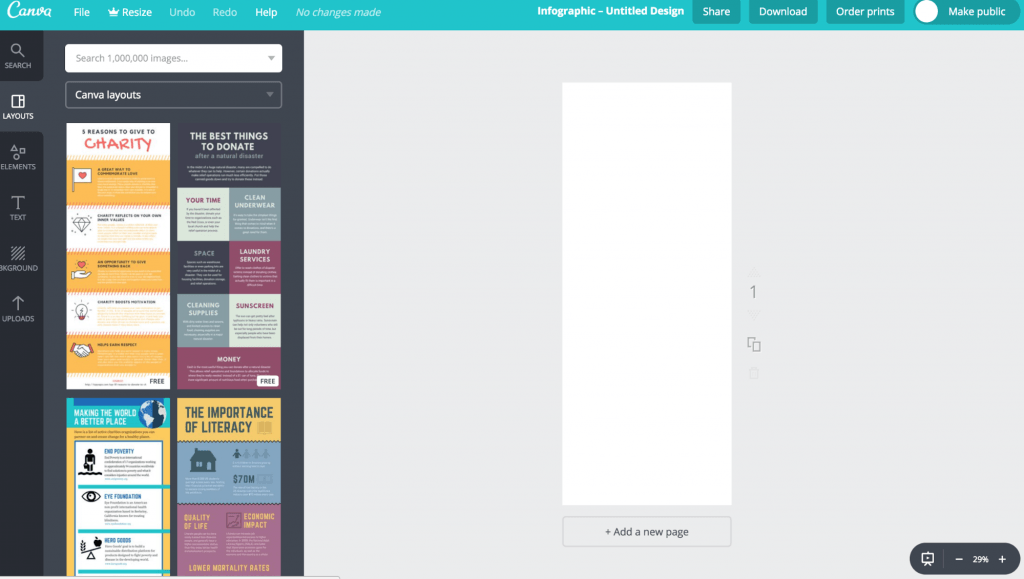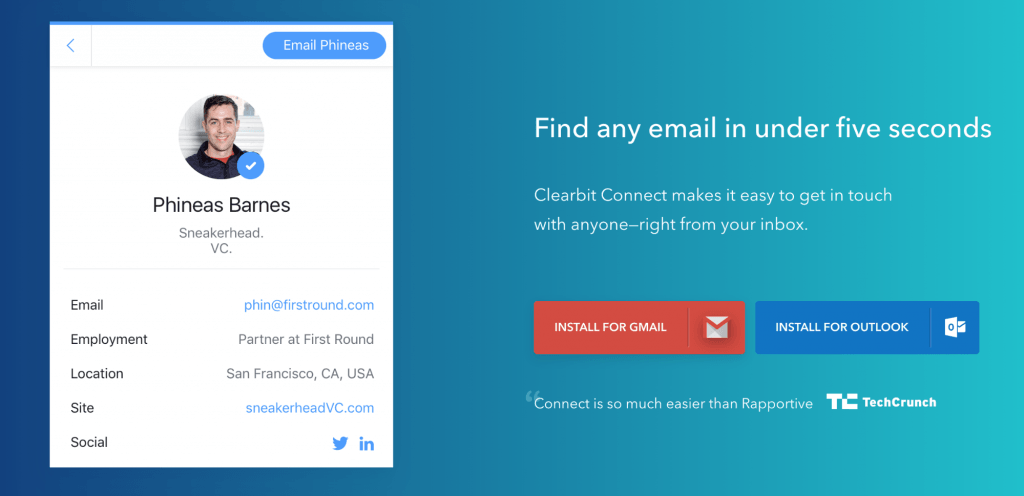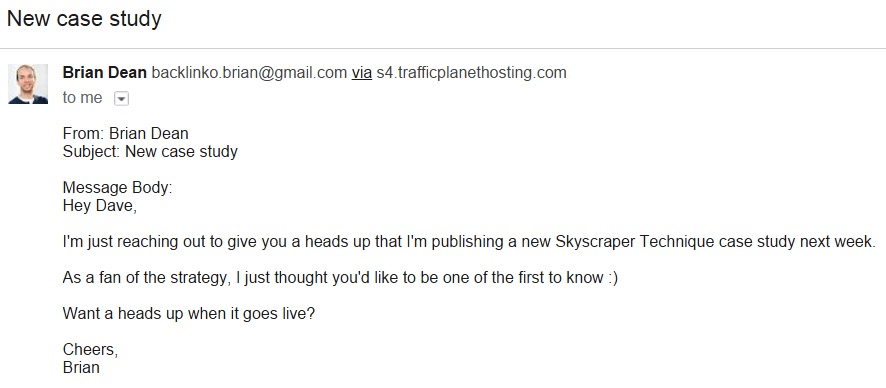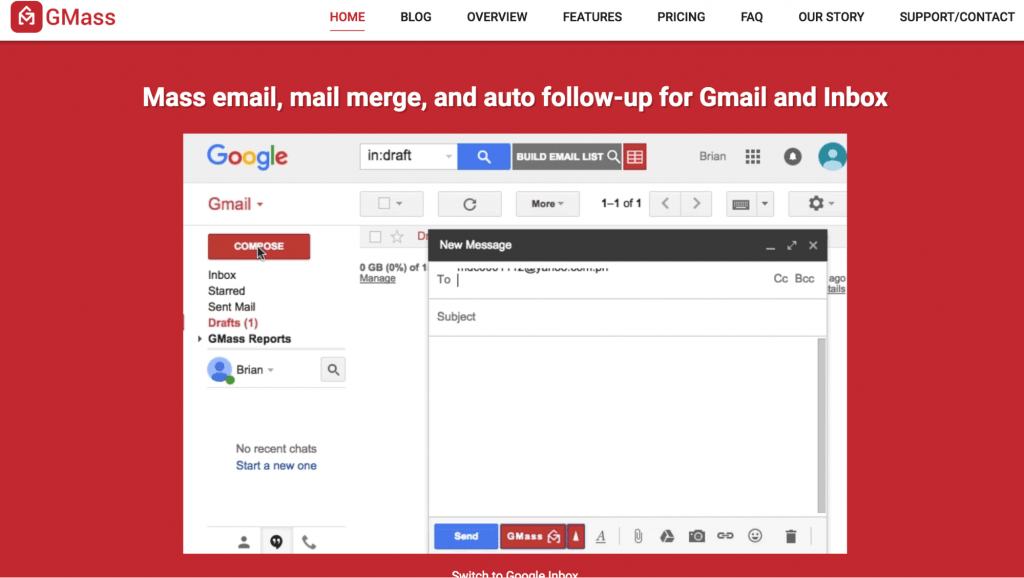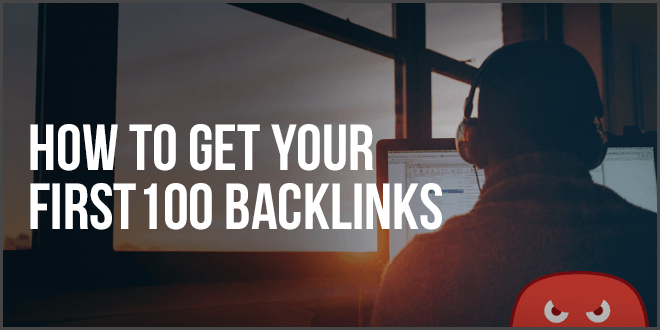
How To Build Your First 100 Backlinks In 30 Days Or Less
Originally posted on https://www.thehoth.com/blog/build-100-backlinks/
Originally posted on YouTube by The HOTH
Want to get your site ranking and established in the serps?
By building your first 100 links, you’ll not only drastically increase your site’s authority – you’ll prime it to rank for tons of keywords!
Building 100 links is simply a matter of some hard work, the right strategies, and knowing how to implement those strategies. Lucky for you, I’m going to show you exactly how to do that.
And I’m not talking about low-quality backlinks from spammy websites. I’m talking about high-quality backlinks from high domain authority websites within your industry.
The kind of backlinks that directly benefit your search rankings.
But before I show you the five tricks I use to generate backlinks, let’s briefly discuss the kind of backlinks you don’t want.
Which links you should avoid…
Not all backlinks are created equal. Some backlinks benefit your website’s SEO tremendously and others will have little effect.
To understand why some backlinks are better than others, you first have to understand why backlinks are so influential in the first place.
Google’s number one goal (and every search engine’s number one goal for that matter) is to deliver results that answer the searcher’s query. They don’t want users to type in “shoes for sale” and see a ton of tennis rackets.
But they don’t just want their results to be relevant; they also want them to be high-quality.
In other words, when you type in “shoes for sale,” they are going to show you the most trusted place that consumers shop.
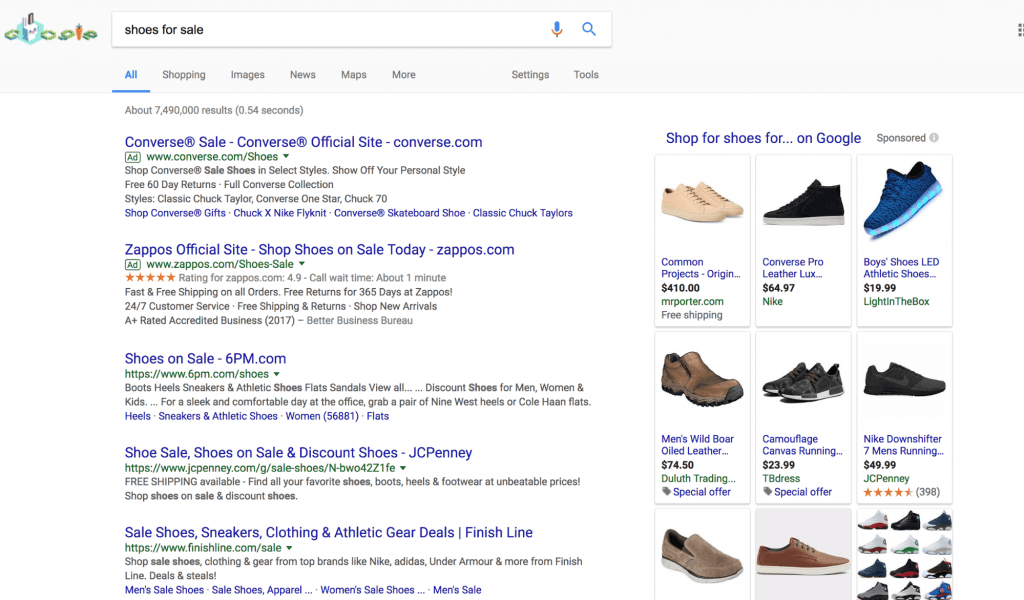
But how do search engines decide which websites are trustworthy?
Enter the backlink.
The backlinks you receive from other websites essentially tell Google, “Hey, look. These two websites like each other.” This means that if the referring website has a high domain authority, the link will benefit your rankings.
If on the other hand, the website is spam, that can hurt your rankings.
In fact, if you want to see what kind of websites are currently linking to your own, you can use Google’s Search Console or Ahrefs.
Any links with seriously low domain authority, a high spam rating, or irrelevant anchor text can either do nothing to help your rankings or outright harm your efforts.
You can use tools like Moz, Ahrefs, and SEMRush to detect these harmful signals.
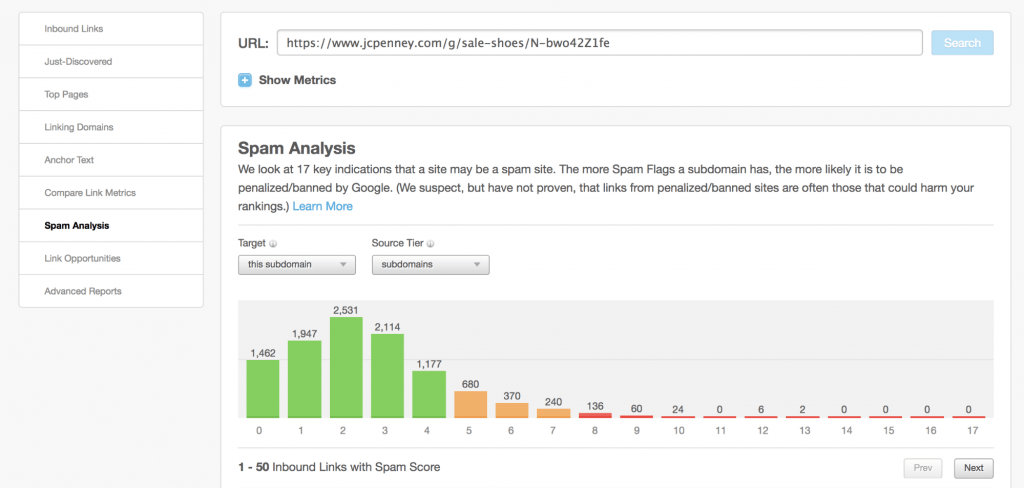
For that reason, it’s important to build high-quality, trustworthy, reliable backlinks instead.
Now, let’s turn to the five tricks you can use to do that.
1. Build Out Brand Signals With Social Profiles
One of the most oft-forgotten link-building strategies are brand signals. The most updated and active social signals you have pointing back to your website, the better your rankings will be.
And the best part is that you don’t have to convince anyone to give you these backlinks. You just set them up yourself.
What are social signals?
Basically, they are the backlinks on social media websites and online directories (such as Facebook, Twitter, etc) that lead back to your website.
Furthermore, if you are active on those social media sites and produce content regularly on your website, that will tell Google you’re active, which is also a win for your SEO.
Plus, the more social signals you get (i.e., shares of your content) the better your rankings.
The bad part about leveraging social signals is that it can take a long time to manually set up all of those accounts on different platforms and make sure they are aligned.
If you want to do it without all the hassle and pay a little money, you can use HOTH Lock My Brand.
However you do it, social signals are too simple and powerful to ignore. They can make a huge difference in your link building strategy and push you toward your goal of 100 links this month.
2. Guest Blog
One of the most talked about strategies for generating backlinks to your website and increasing your rankings is guest blogging.
It’s an effective and non-invasive method for your link-building strategy.
Guest blogging can be a lot of work, but the good news is that these links are usually high-value backlinks. They aren’t low-quality because you focus on publications that have a high domain authority.
The more websites you can get these nice in-content links on, the more you’ll increase your rankings!
Some guest bloggers try to generate backlinks by pitching a post idea, getting it accepted, and then awkwardly including a link within the content.
The problem with this is that those awkward links are sometimes a blaring signal that you’re just writing the article for a backlink — which most publications won’t appreciate. Many editors will actually take the link out or reject your article altogether if they see this happening.
In order to avoid that demise, start by writing a great piece of content on your own website. Something awesome that’s worth actually linking to.
Consider resource type posts like:
- 10 tools to generate leads automatically.
- 5 ways to build an online following.
- The ultimate guide to building out your marketing strategy.
And for the sake of your own rankings, the higher the word count on your article, the better.
Before you pitch topics or articles to a publication, you’ll want to check for a few things.
First, make sure that they have a domain authority that’s at least DA10, and the higher the better.
You can do that by going here and typing in the URL of the website.
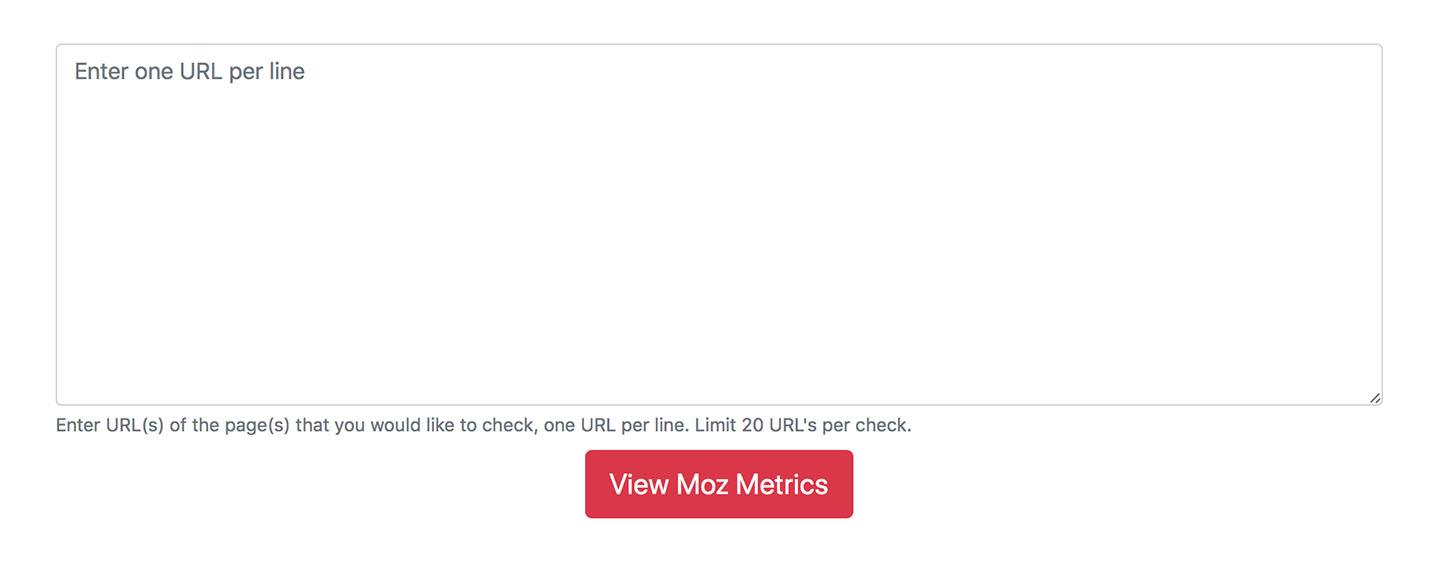
This is what will show up.
Second, you’ll also want to make sure that the links on the website you’re targeting are follow links instead of no-follow links, which will give you the most value.
To do so, you can simply download NoDoFollow for Firefox for free.
The extension will color code links that are no-follow. Simply go to the website you’re looking at and see which color shows up.
Once you’ve written a link-worthy piece of content on your own website and you have a topic idea to pitch to an editor, it’s time send the email.
You can use this as an example of a great email pitch for blogger outreach:

If you don’t want to send immediately, you can use Boomerang to schedule emails for later delivery and measure how effective the email you wrote is.
Then, write the article, include your link, and you’ve won yourself another high-quality backlink.
We wrote a whole article about how to get white hat outreach links here!
3. Create and Share an Infographic
Many bloggers and content creators love to share images.
This is because images are one of the most effective types of content. Since they are visual and don’t take long to absorb, they are also highly engaging.
Since they are engaging, readers love to share them which means that content distributors love to use them.
And the pinnacle of all content images is the infographic.
The best infographics include data on a certain topic or simple and applicable ways to solve a problem.
Consider titles like “10 ways to keep your lawn green” or “Data that proves the power of Facebook Ads.”
You can even use a tool like Buzzsumo or our own Headline Generator Tool to get title inspiration ideas.
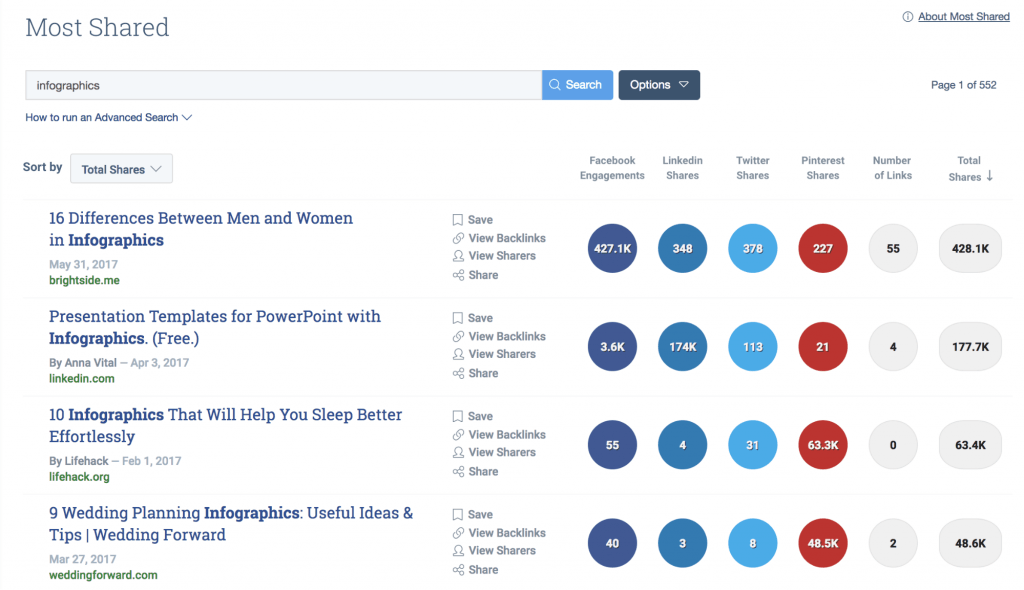
If you have original data to put in your infographic, then no need to worry about external links. Otherwise, you can just borrow stats from other websites and cite your sources at the bottom of the infographic.
Whatever you do, create an infographic with a focus on applicable tips or reliable data.
If you want to create an infographic on your own, you can use Canva to do so for free.
But if you don’t trust your own design skills, then go somewhere like Fiverr or 99designs to hire someone cheap to create it for you.
Now, here’s where the real backlink generation magic comes in.
Collect a list of blogs within your niché that have good domain authority and would be able to provide you with a quality backlink.
To find email addresses, you can use Clearbit, which you can install for free on your Gmail or Outlook account.
Then, once your infographic is created, email everyone who might be interested, asking them to share it with their own audiences.
Just say something similar to what Brian Dean does:
Then, if they do want to be notified, follow up and ask them if they’d like to share the content with their own audience.
And voilá! When people agree to share the infographic, you’ll receive a backlink to your own website.
Of course, the more people you email, the more responses you’ll receive and the more backlinks you’ll generate as a result of this outreach.
I recommended sending at least 500 cold emails asking for a share of the infographic. That’s because not everyone who you send a cold email will respond. And not every response will be positive.
You can use GMass to do so. It allows you to personalize and bulk-send up to 10,000 individual emails.
If you are looking to improve your outreach process, I recommend reading Jason Quey’s guide “A Simple Influencer Outreach Plan Every Serious Marketer Needs to Know.”
4. Scour LinkedIn for Contributors to Massive Publications
Another great way to build backlinks to your website — particularly from massive publications — is to go looking for the people who regularly write for the websites you’d like to be mentioned on.
And LinkedIn is one of the best places to search for these people.
Since LinkedIn users are trying to sport impressing titles as is, a contributor isn’t going to miss the opportunity to add that to their bio.
Which is good for the sake of your link-building strategy.
Simply go to LinkedIn and search for the term “contributor.”
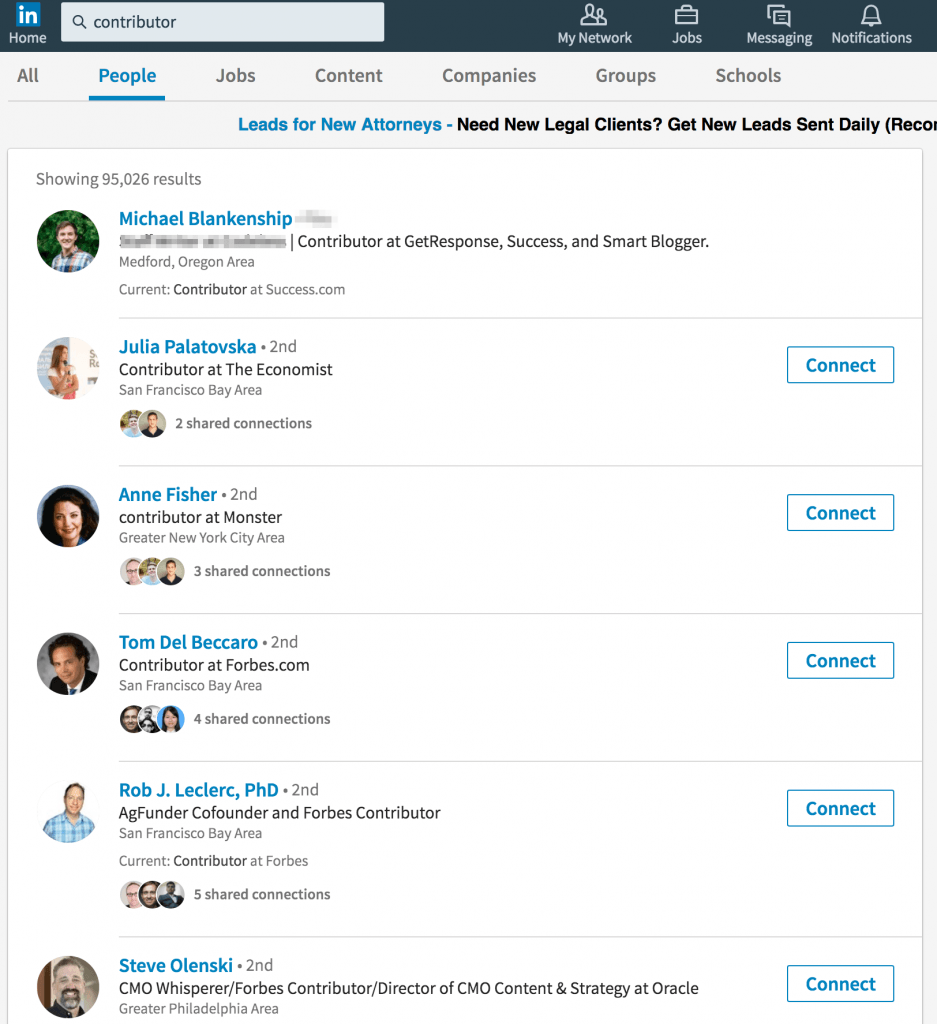
You’ll get a whole list of people who write for different publications.
But that list might not be narrow enough for your purposes. You might be looking for contributors to certain publications.
If that’s the case, then just narrow your search down by typing “contributor” and then adding the publication you want a backlink from.
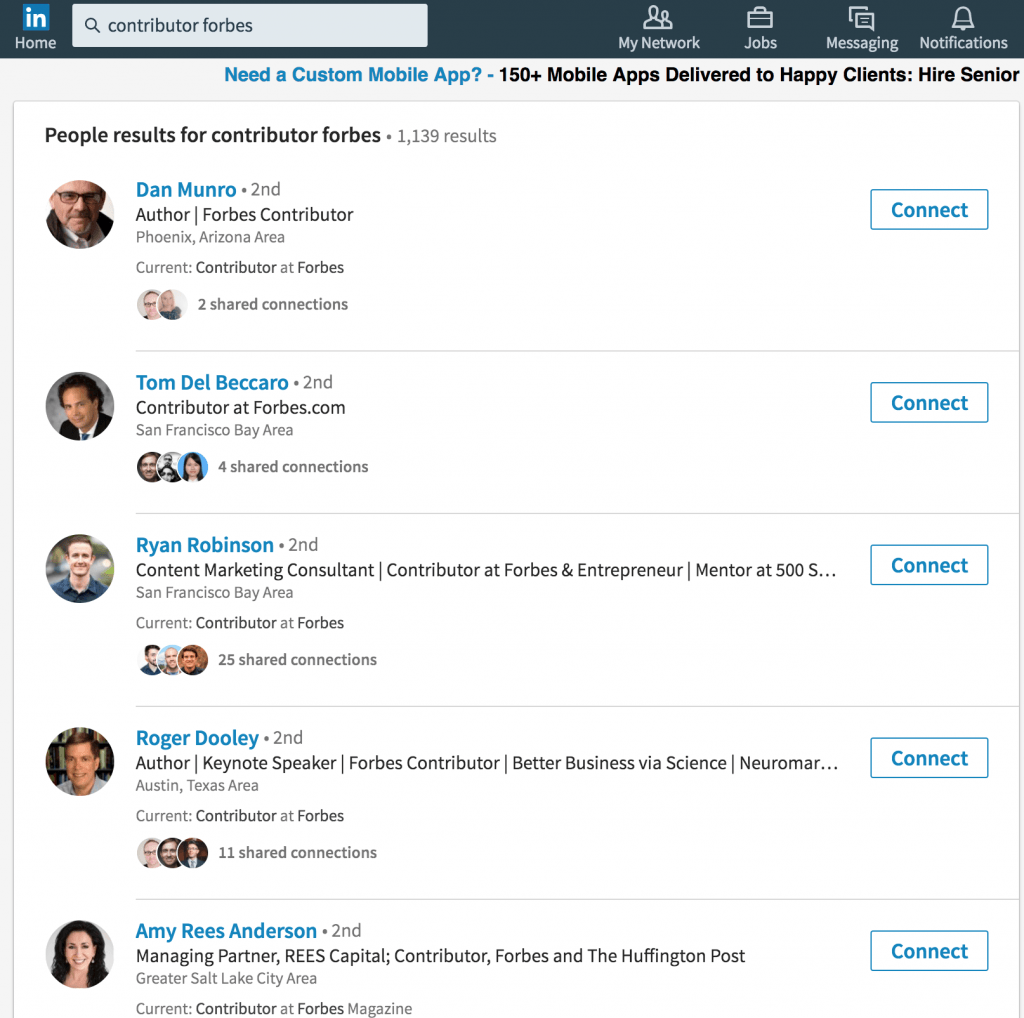
Then, message a few of the contributors and tell them about yourself, starting to build a relationship with them.
For example…
If you angle your message in a friendly manner like the above example, then contributors will be more likely to reach out to you for help.
They often need experts who they can quote or reference, and if you’re their friend, they’ll think of your first.
5. Write testimonials
The last trick is dead simple.
While some of the others might take you a little bit of time to implement, this one will be super quick and effective.
All you have to do is make a list of business partners, customers, or other trustworthy websites that allow you to write a testimonial and include a link to your website within that testimonial.
Then, write testimonials for these places and include a link to your website.
Yep. It really is that simple.
Each testimonial will win you a backlink, which is a small amount to write for such a big payoff.
Conclusion
Building 100 backlinks to your website over the next month is far from impossible. In fact, if you really put your mind to it, you could generate even more than that.
The reality is that building backlinks — like everything else worth doing — takes some hard work, some time, and the correct implementation of effective strategies.
In particular, you’ll want to create and share an infographic, build your social signals, search LinkedIn for contributors to publications and ask for mentions, guest blog, and write testimonials.
Do these things, and you’ll be off to 100 or more backlinks within the next 30 days.
If you don’t have the time to build these links yourself, we can help!

